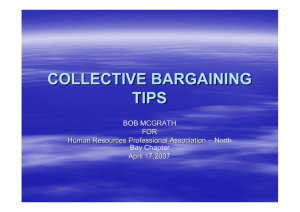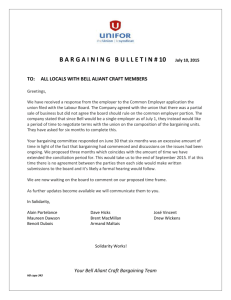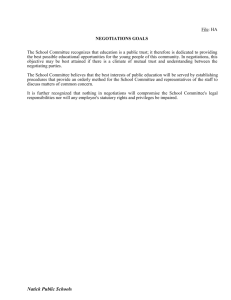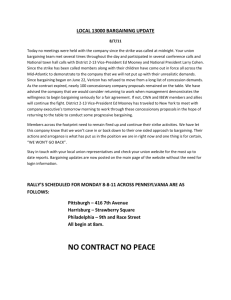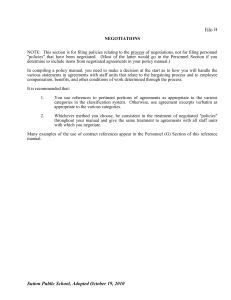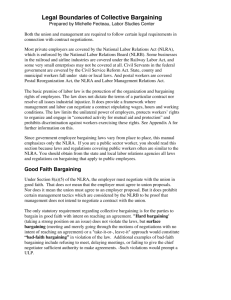Outline for Bargaining Discussion
advertisement
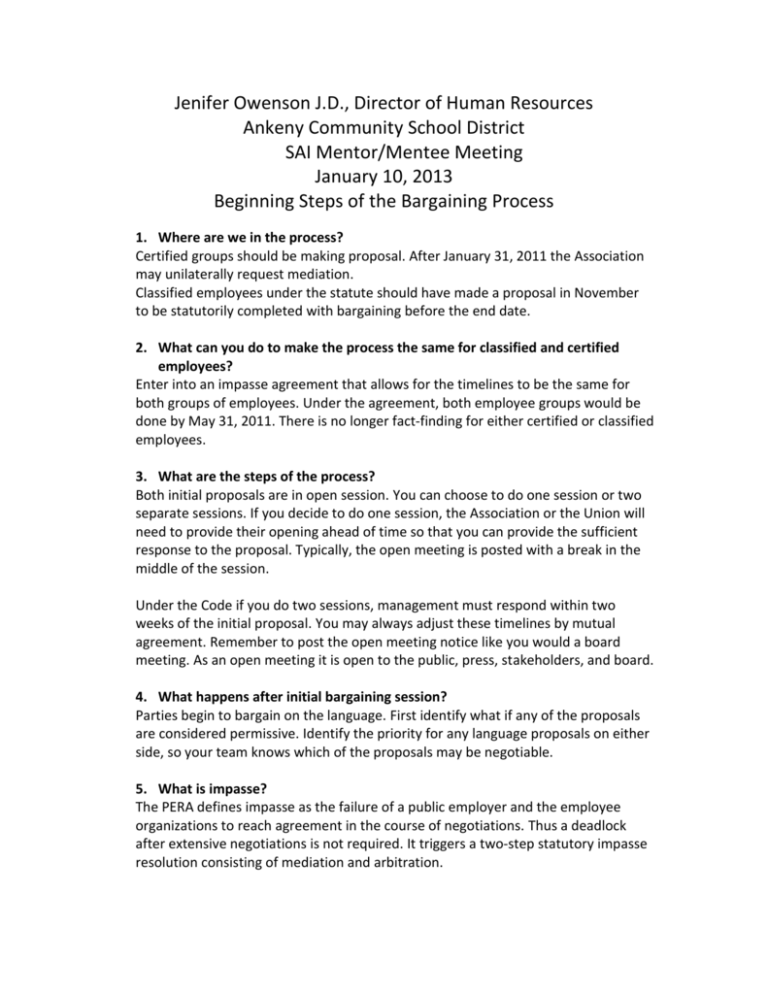
Jenifer Owenson J.D., Director of Human Resources Ankeny Community School District SAI Mentor/Mentee Meeting January 10, 2013 Beginning Steps of the Bargaining Process 1. Where are we in the process? Certified groups should be making proposal. After January 31, 2011 the Association may unilaterally request mediation. Classified employees under the statute should have made a proposal in November to be statutorily completed with bargaining before the end date. 2. What can you do to make the process the same for classified and certified employees? Enter into an impasse agreement that allows for the timelines to be the same for both groups of employees. Under the agreement, both employee groups would be done by May 31, 2011. There is no longer fact-finding for either certified or classified employees. 3. What are the steps of the process? Both initial proposals are in open session. You can choose to do one session or two separate sessions. If you decide to do one session, the Association or the Union will need to provide their opening ahead of time so that you can provide the sufficient response to the proposal. Typically, the open meeting is posted with a break in the middle of the session. Under the Code if you do two sessions, management must respond within two weeks of the initial proposal. You may always adjust these timelines by mutual agreement. Remember to post the open meeting notice like you would a board meeting. As an open meeting it is open to the public, press, stakeholders, and board. 4. What happens after initial bargaining session? Parties begin to bargain on the language. First identify what if any of the proposals are considered permissive. Identify the priority for any language proposals on either side, so your team knows which of the proposals may be negotiable. 5. What is impasse? The PERA defines impasse as the failure of a public employer and the employee organizations to reach agreement in the course of negotiations. Thus a deadlock after extensive negotiations is not required. It triggers a two-step statutory impasse resolution consisting of mediation and arbitration. 6. What does Good Faith Bargaining mean? A public employer’s duty to negotiate in good faith requires it to designate bargaining representatives with the authority to reach tentative understandings on behalf of the employer, subject to ratification, explain the reasons for the employers’ objections to proposals and to conduct negotiations in a sincere effort to reach agreement. There is still the right to say no and reject the proposals. The employer must also deal with the bargaining agent and not directly deal with employees. The employer may communicate the factual status of negotiations without any threat of reprisal on an informational level. Employer must also agree to meet at mutually designated times and respond to requests for information. 7. Do you need ground rules and if so, what should they say? See the attached. 8. Where do you go for comparable data? Comparable data is an essential component of the process. Iowa Association of School Boards and ISFIS have both indicated that they will be creating an exhibit bank so that schools can access comparability data. Additionally, schools can rely on counterparts within the athletic conference for data. PERB also has a good database for contracts in which data can be pulled for comparability on language. 9. Other tips for negotiations: a. If you prepare and plan your negotiations, you will be more equipped to deal with the Association or union. You will always know where you are going, where you are in the process, and will know what you can do if negotiations are unsuccessful. b. The objective of the negotiator is to obtain, efficiently, an agreement that is fair to both sides. We want to keep the relationship intact. c. Remember you can only correct and control the situation, not the other person. Our focus has to be on the problem and the process. d. A negotiator may not only require negotiating the issue, but also the ground rules of the negotiation process. e. Recognize when a tactic is being employed. Address the tactic with the other party. Do not personalize it ("You are lying to me!"). f. Always have sufficient confidence to stop proceedings if they are not going well. This can be via a caucus, or even rescheduling for another day or venue.

